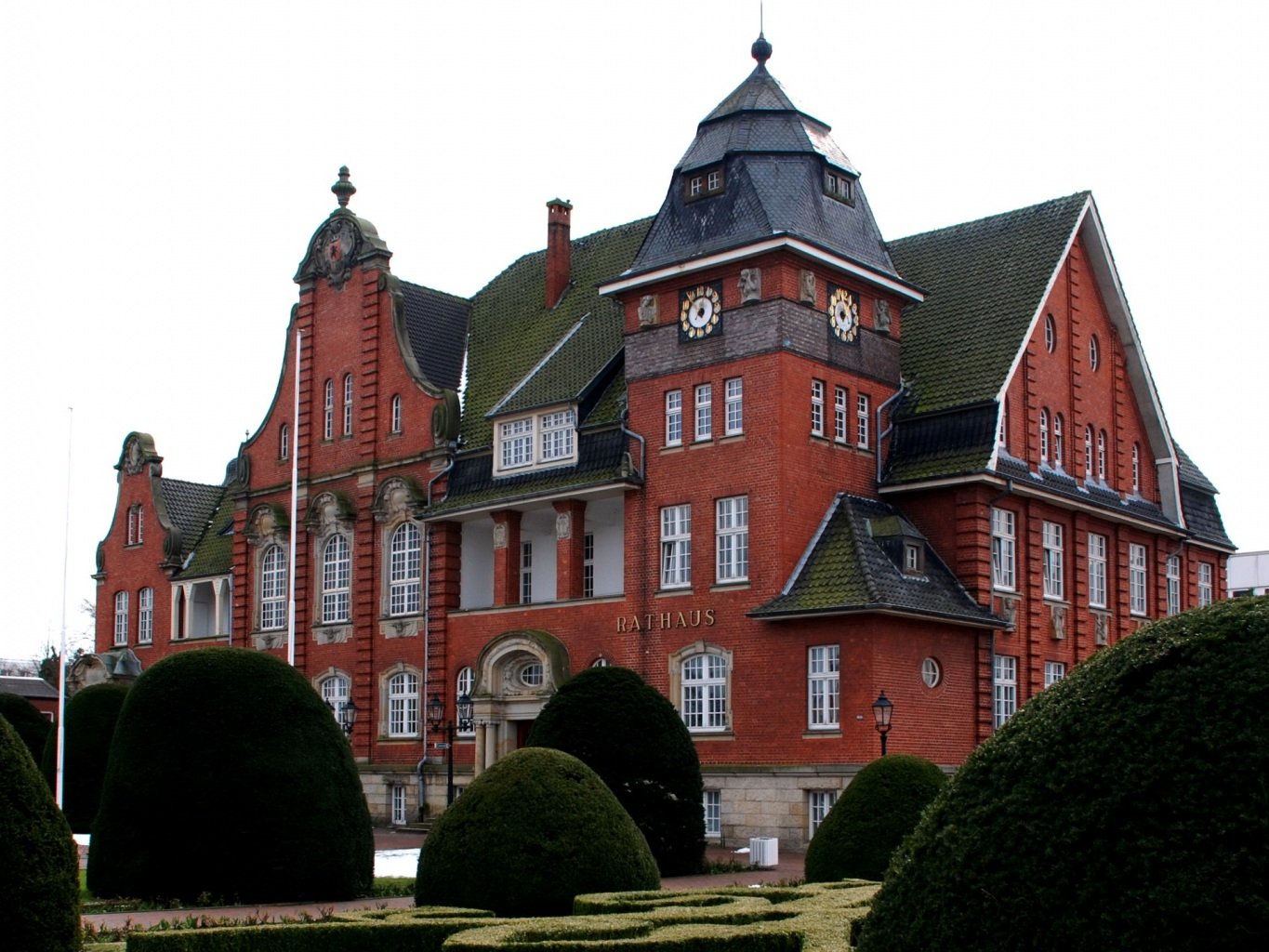Facade #145
Before us stands a magnificent example of early 20th century Northern European brick architecture — the Rathaus (Town Hall). This imposing structure embodies the characteristic Northern German style with elements of Neo-Gothic and Jugendstil (Art Nouveau) influences.
The facade features a striking asymmetrical composition in red brick, creating a dramatic contrast with the greenish roof. The right section of the complex is accentuated by a clock tower crowned with an elegant pavilion roof and spire. The clock tower has a square form with a steep multi-pitched dome covered in slate tiles. Each face of the tower displays clock dials framed by decorative elements.
The left projection of the facade culminates in a figurative gable characteristic of Northern Baroque, complete with volutes and an ornamental finial. The central part of the building is marked by a portico with columns and an arched entrance, above which the inscription "RATHAUS" is prominently displayed. The diversity of window shapes — arched, rectangular, and circular — creates a rhythmic visual pattern across the facade.
Architectural details include rusticated corners, decorative bas-reliefs, and cornices that emphasize the monumentality of the structure. In front of the building lies a geometric garden with meticulously trimmed shrubs creating a formal composition typical of official administrative buildings.
Overall, this is an impressive example of civic architecture from the early last century, where functionality merges with representational grandeur expressed through rich architectural forms and details.
